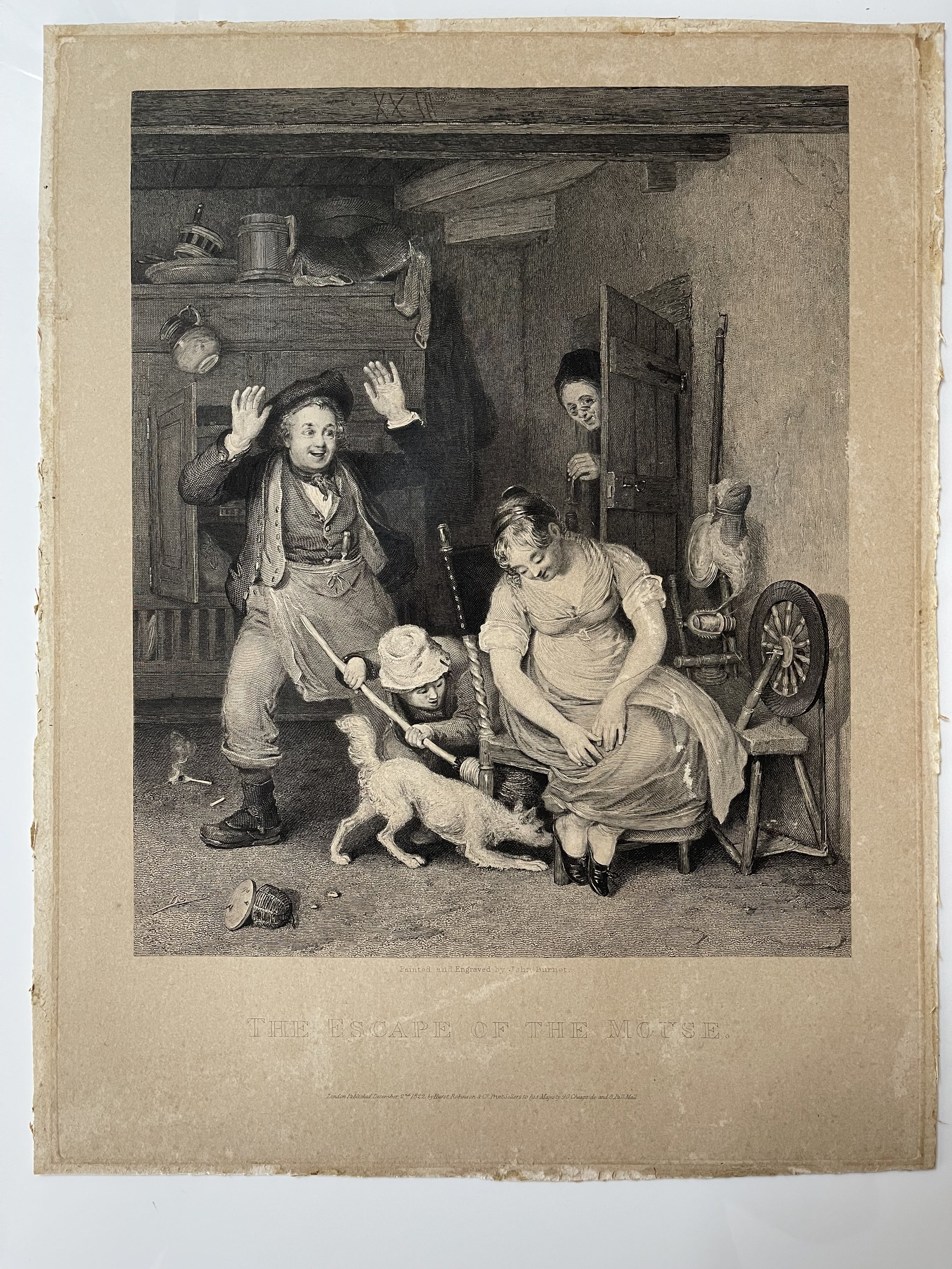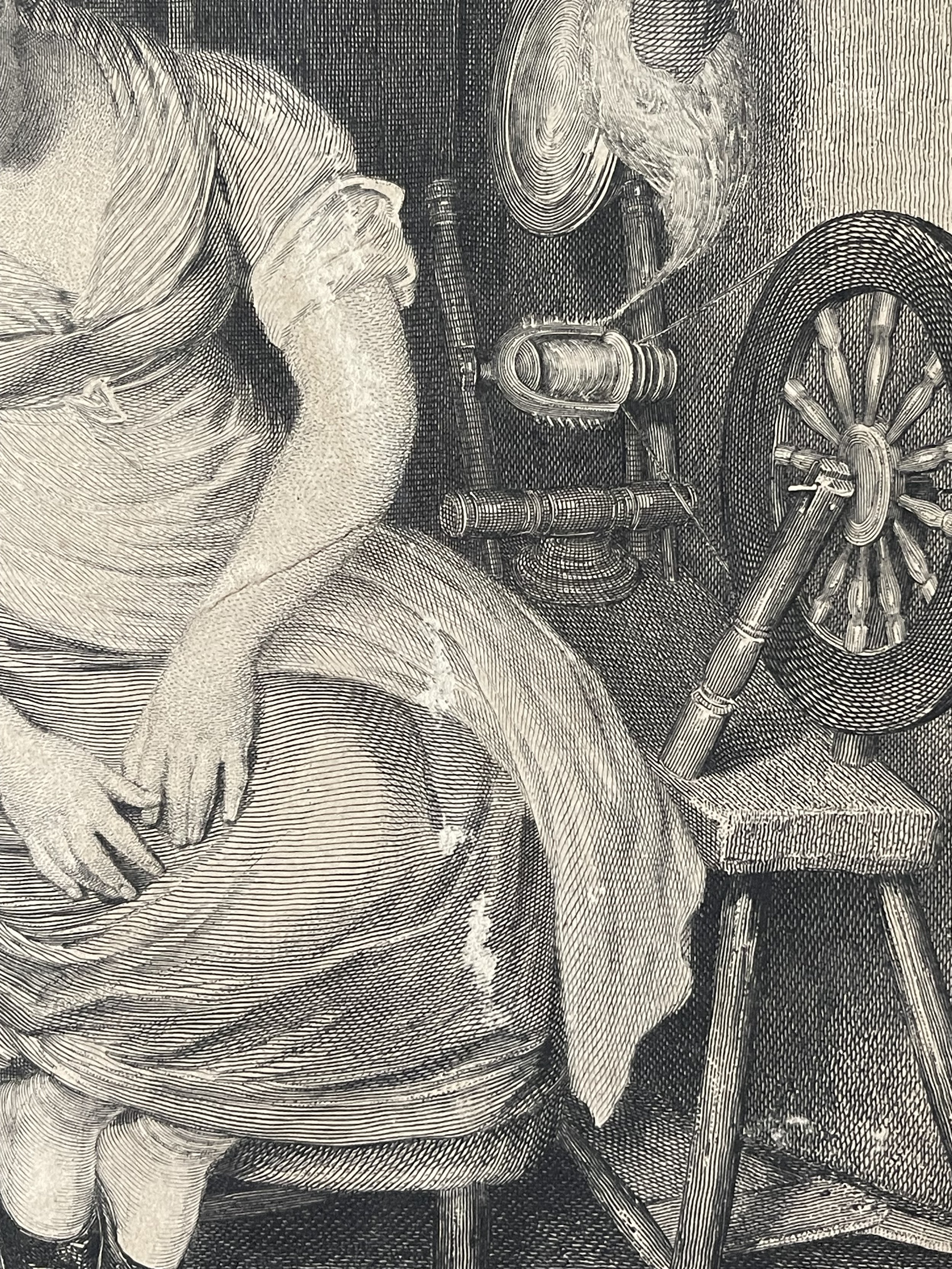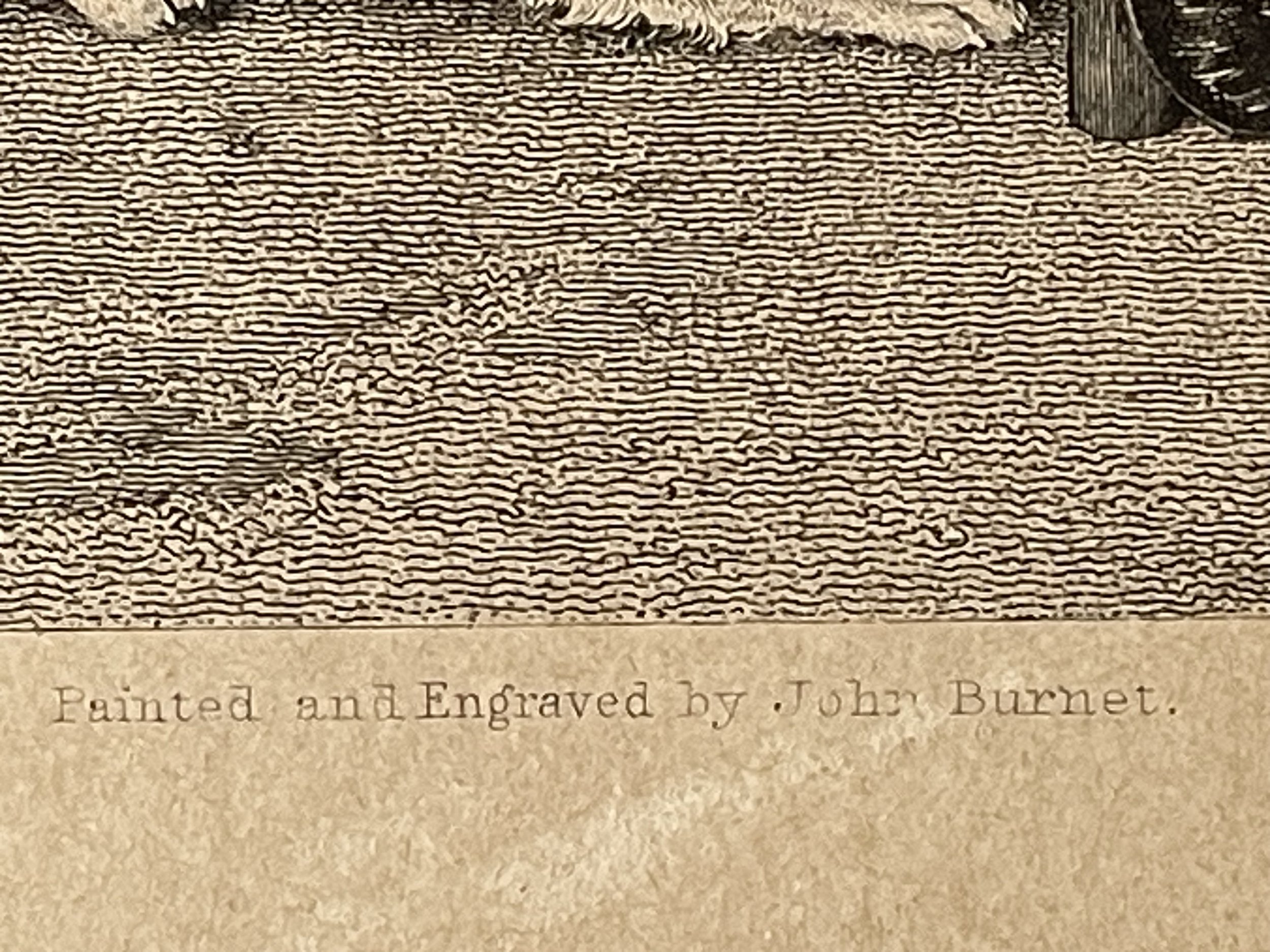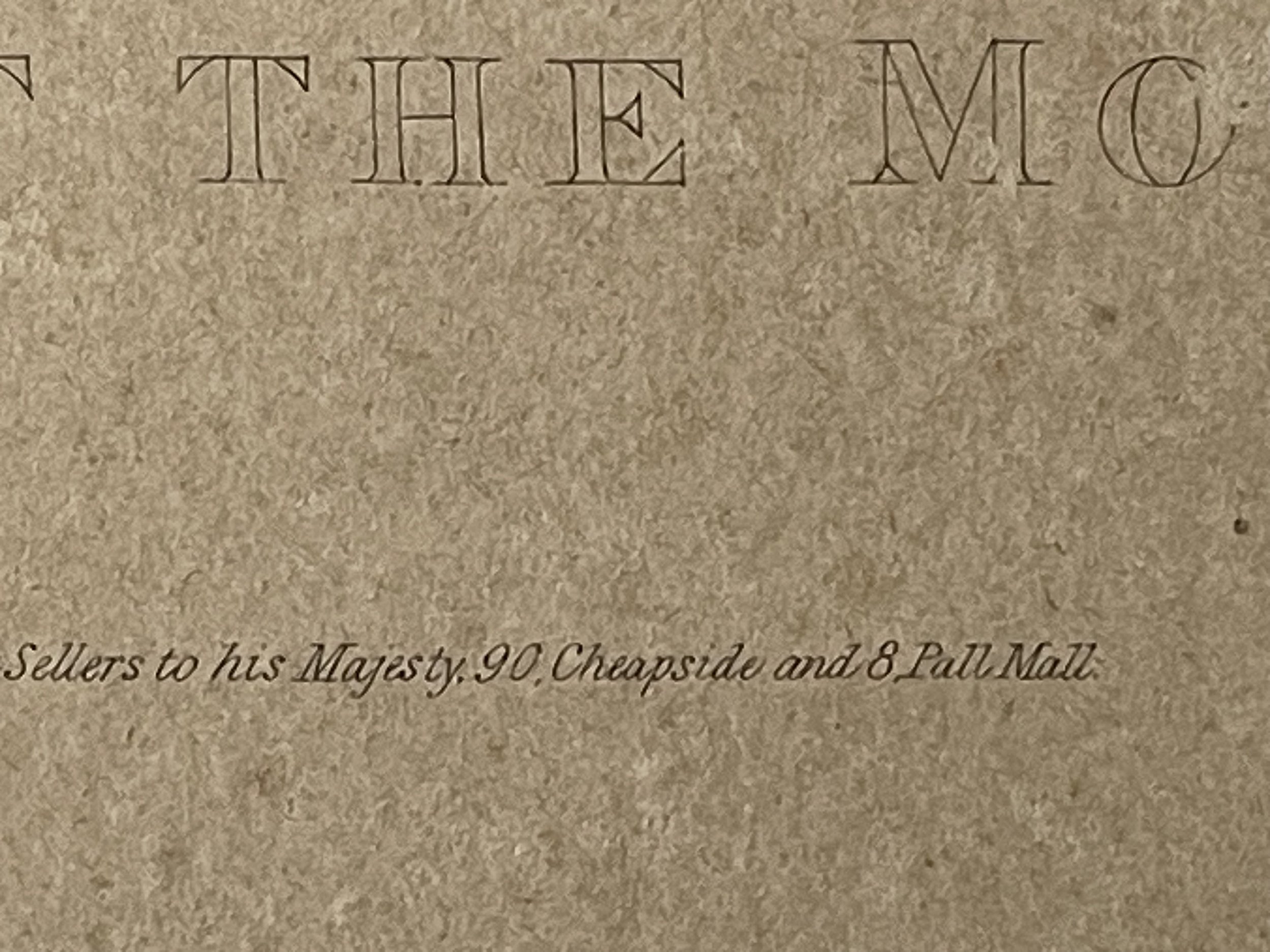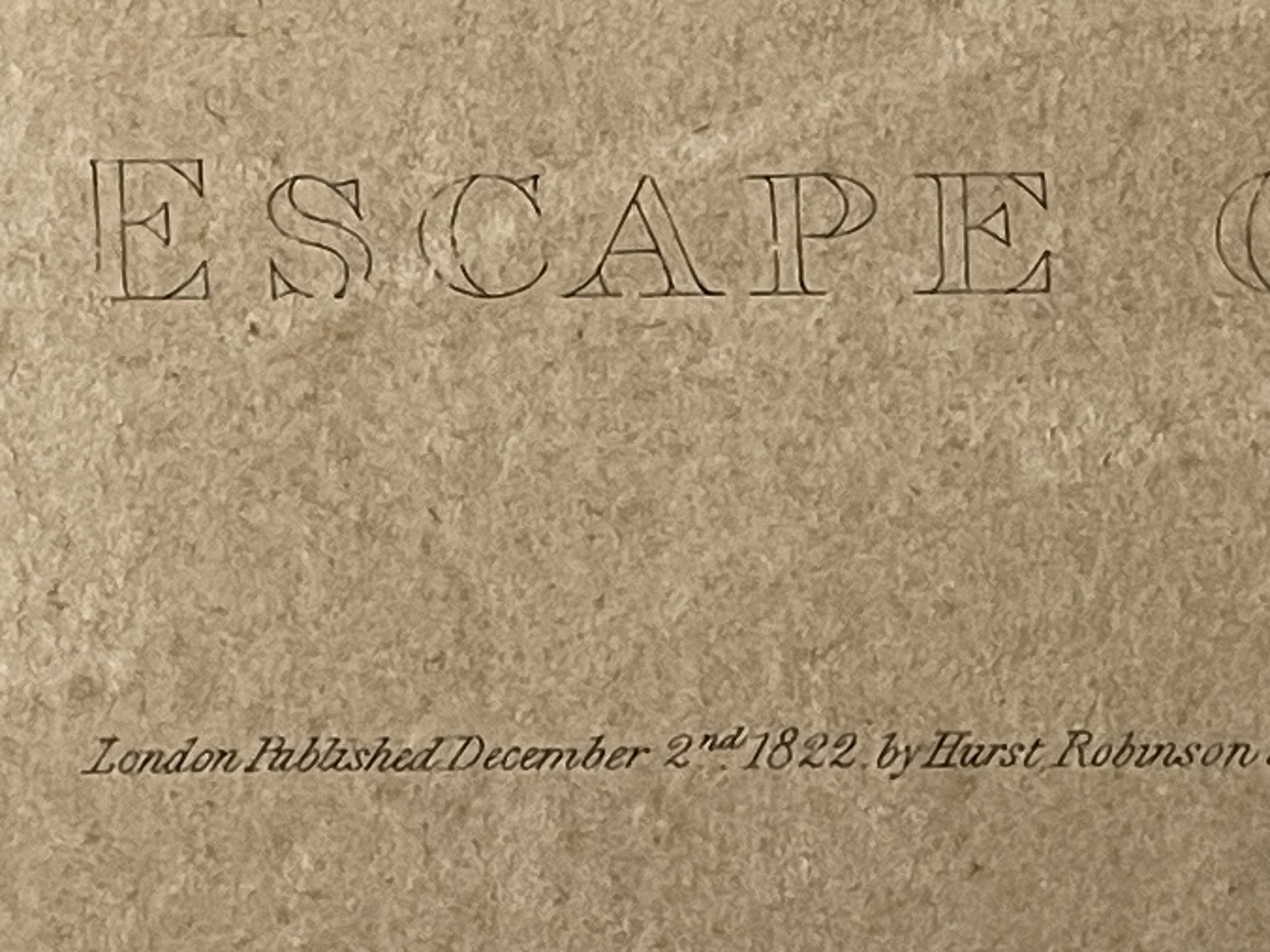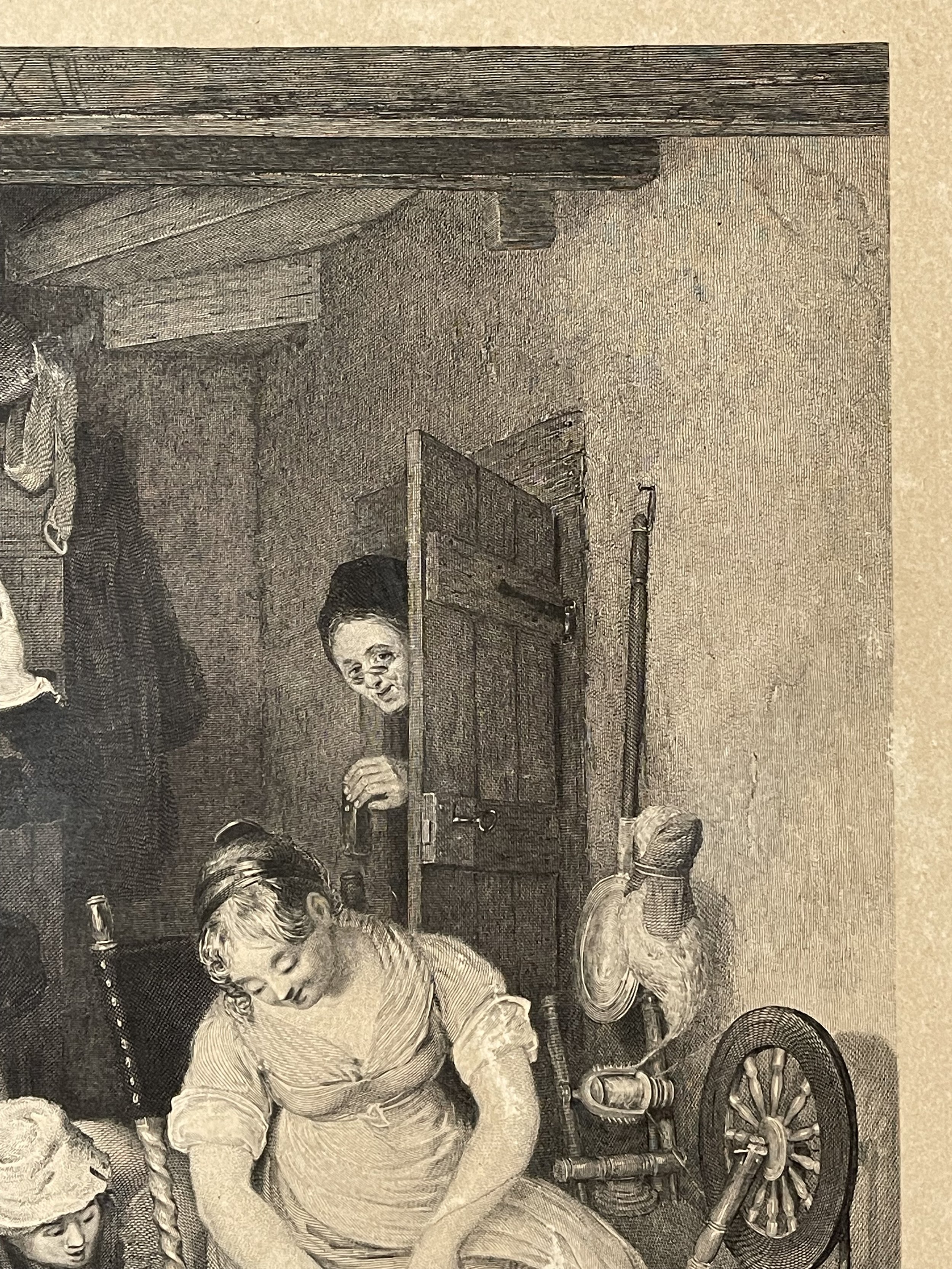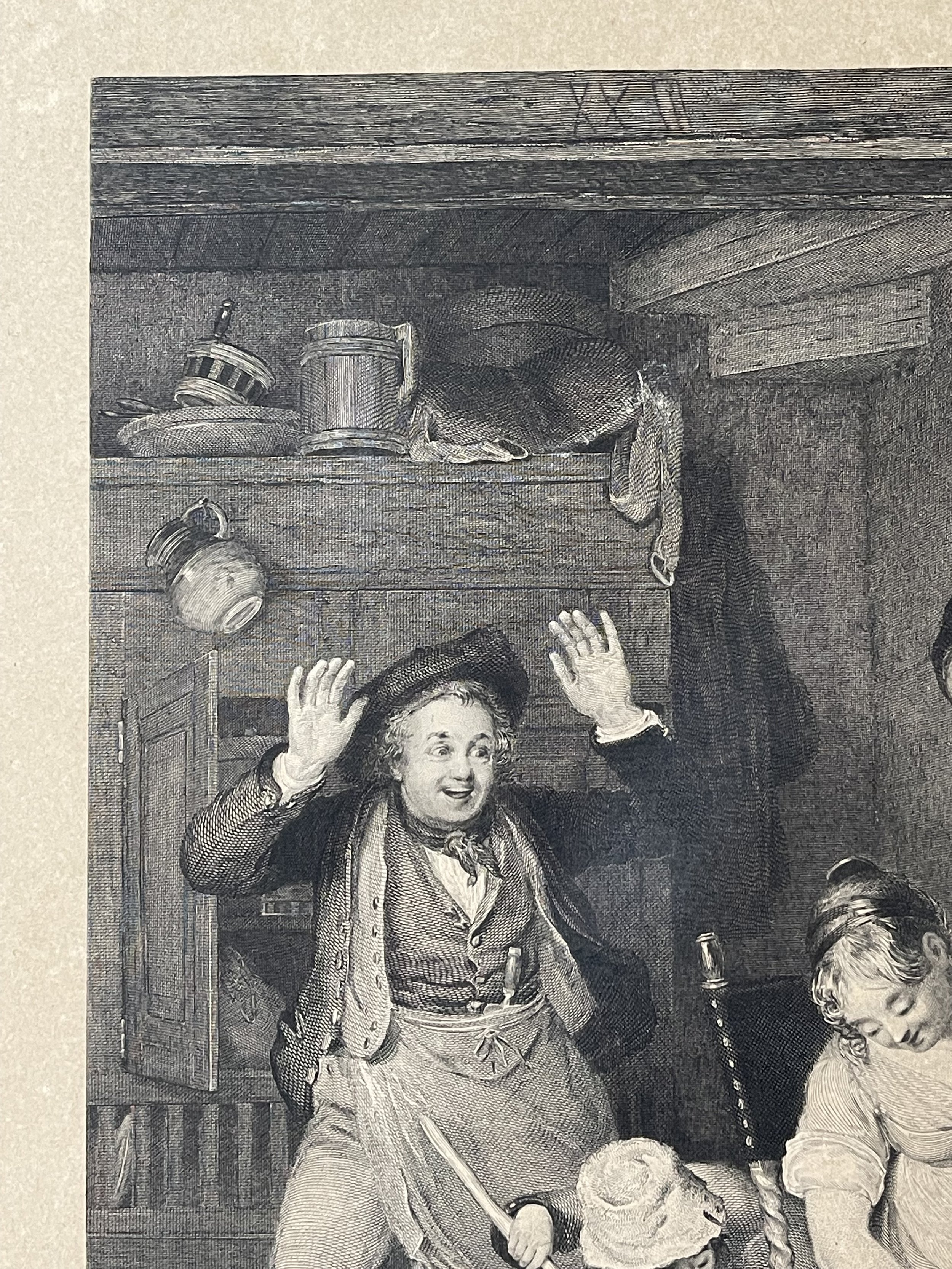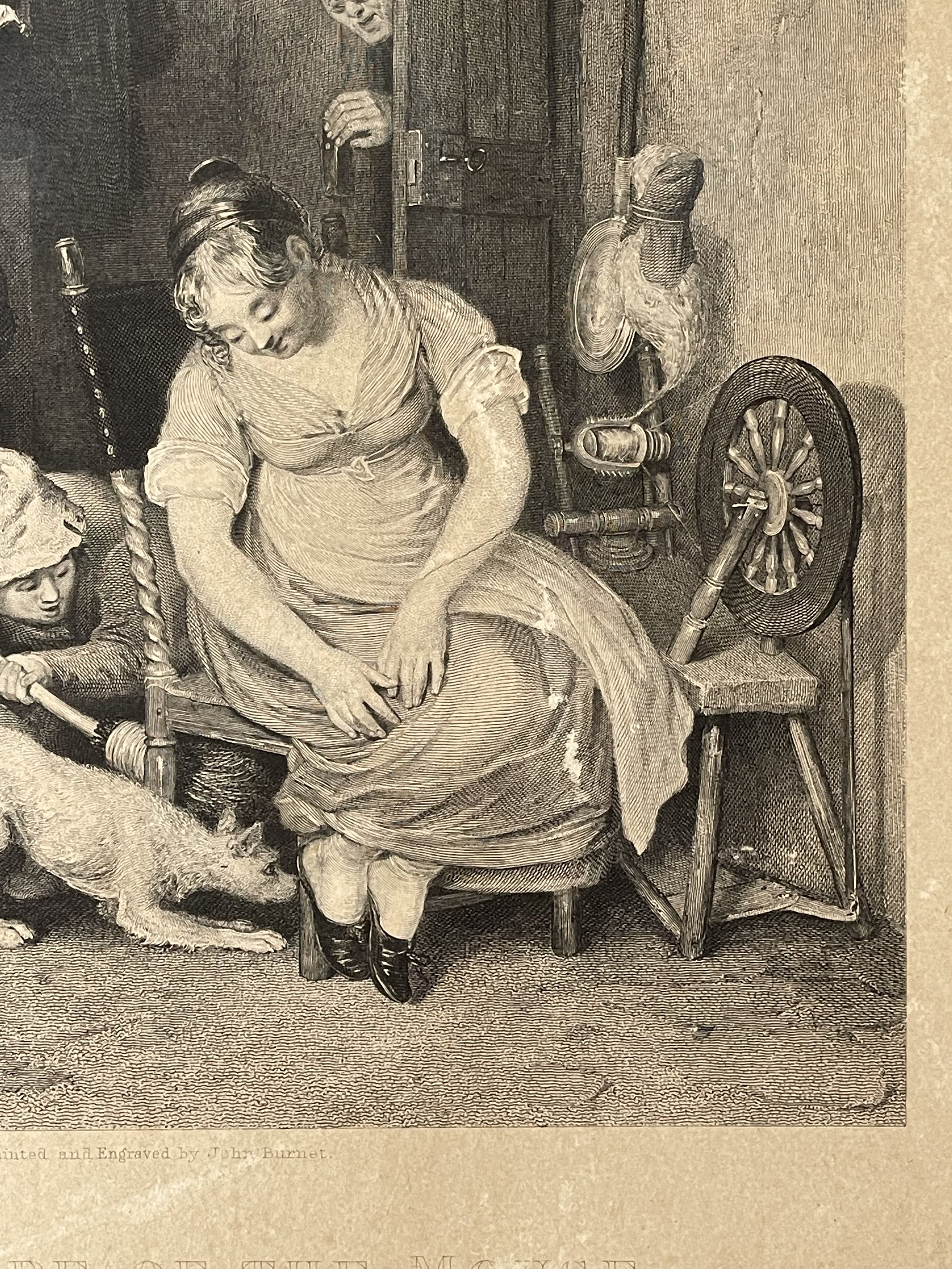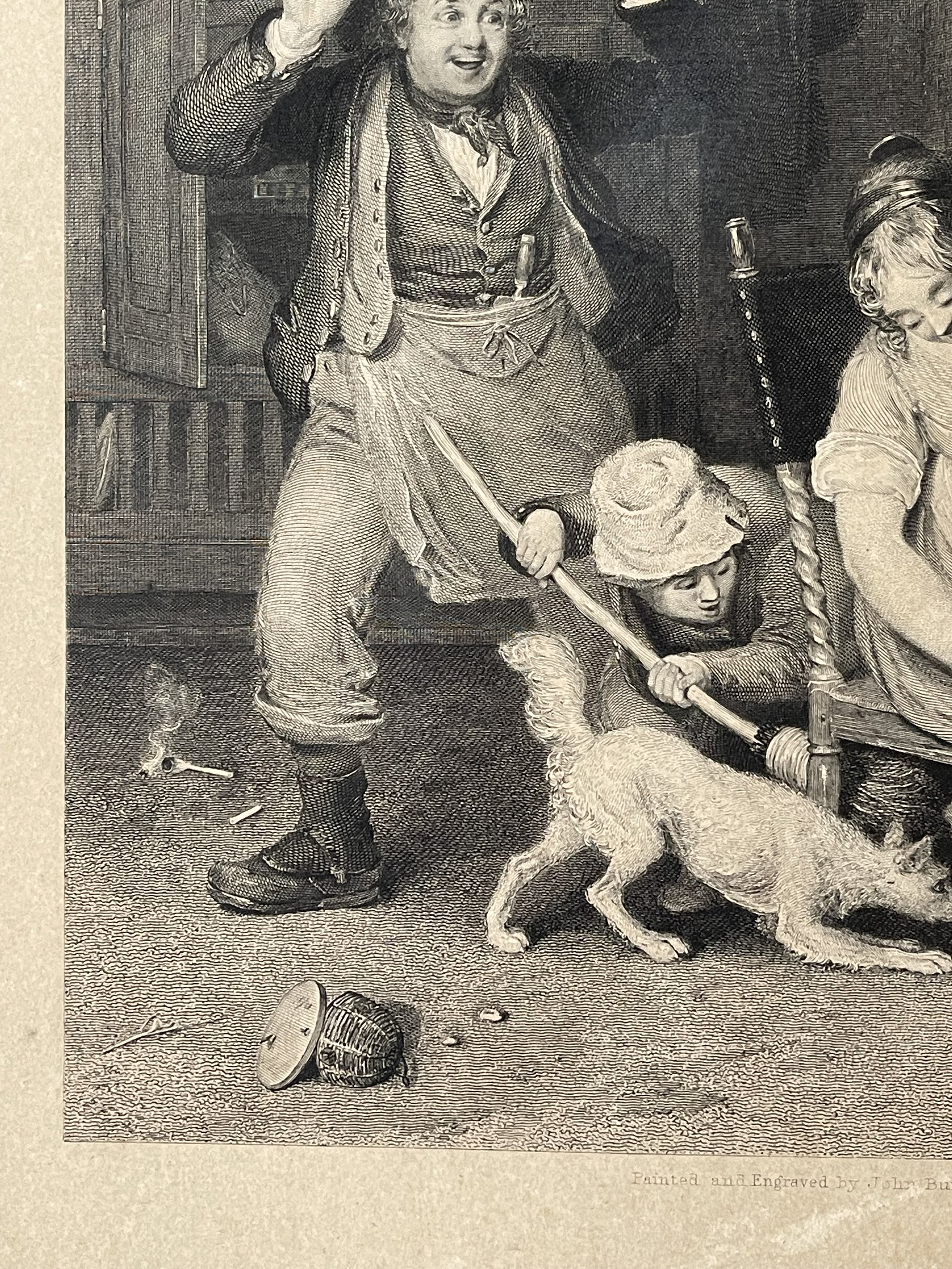The Escape of the Mouse - John Burnet - 1822
The Escape of the Mouse - John Burnet - 1822
John Burnet (1784-1868), a painter and engraver, was born on March 20th, 1784, in Musselburgh, near Edinburgh. He was the son of George and Anne Burnet, with his father being the surveyor-general of excise for Scotland. Burnet received his instruction from Mr. Leeshman, who was the master of Sir Walter Scott. He then went on to become an apprentice to Robert Scott (father of well-known artists David Scott and William Bell Scott), a landscape-engraver. He also studied painting at the Trustees' Academy under John Graham, alongside notable artists David Wilkie and William Allan, who later became Sir William Allan. Burnet served his full apprenticeship (seven years) to Scott, working tirelessly on both painting and engraving. However, he believed that this dual focus hindered his potential in both areas.
In 1806, Burnet made his way to London on a Leith smack, arriving with a meagre amount of shillings in his pocket and an engraved plate for Cook's "Novelist." He was warmly welcomed by David Wilkie, who had arrived a year earlier and had already made a name for himself with his famous painting "The Village Politicians." Burnet spent some years working on small plates for publications such as "Novelist," Britton and Brayley's "England and Wales," and Mrs. Inchbald's "British Theatre." In 1810, he took on his first major project - an engraving of "The Jew's Harp" by Wilkie, which was the first painting by the artist to be engraved. Burnet's early small plates were inspired by the style of James Heath, while "The Jew's Harp" mimicked Le Bas. This piece led him to form a relationship with William Sharp - a renowned historical engraver. The success of this piece prompted more engravings, including "The Blind Fiddler," where Burnet chose to adopt the larger style of Cornelius Visscher. However, Wilkie and Sir George Beaumont were not pleased with the outcome and insisted on retouching the plate after the initial prints were made. As a result, there are two sets of proofs for this engraving, with the first set displaying slight differences such as the hat of the boy with the bellows being drawn in a single line. "The Blind Fiddler" became quite popular, leading to the proposal of a companion piece - "The Village Politicians." However, due to a disagreement over terms, this piece was eventually created by Raimbach instead of Burnet. Burnet continued to engrave pieces after Wilkie's paintings, including "The Reading of the Will," "The Chelsea Pensioners reading the Gazette of the Battle of Waterloo," "The Rabbit on the Wall," "The Letter of Introduction," "Sir David Baird discovering the Body of Tippoo Saib," and "The Village School."
In 1813, after the peace was declared, the Louvre Museum in Paris was filled with masterpieces imported from various parts of Europe. Burnet took advantage of this and spent five months in Paris copying and studying these pieces. He then engraved several plates for Foster's "British Gallery," with the most notable ones being "The Letter-writer" after Metzu, and "The Salutation" after Rembrandt. Burnet later became a part of an association of engravers who collaborated on Mr. Shee's publication, where he contributed some of his best engravings.
Located mainly in museums (Philadelphia & Baltimore Museum of Art, British Museum), and not usually for general sale, this engraving in very good condition apart from a small blemish (around the itting ladys left knee - see photo). The print however is on card. The glue used seems not to have affected the engravings quality. A rare engraving of the period by Burnet. Pricing and grading commensurate.
The Escape of the Mouse - John Burnet - 1822
John Burnet (1784-1868), a painter and engraver, was born on March 20th, 1784, in Musselburgh, near Edinburgh. He was the son of George and Anne Burnet, with his father being the surveyor-general of excise for Scotland. Burnet received his instruction from Mr. Leeshman, who was the master of Sir Walter Scott. He then went on to become an apprentice to Robert Scott (father of well-known artists David Scott and William Bell Scott), a landscape-engraver. He also studied painting at the Trustees' Academy under John Graham, alongside notable artists David Wilkie and William Allan, who later became Sir William Allan. Burnet served his full apprenticeship (seven years) to Scott, working tirelessly on both painting and engraving. However, he believed that this dual focus hindered his potential in both areas.
In 1806, Burnet made his way to London on a Leith smack, arriving with a meagre amount of shillings in his pocket and an engraved plate for Cook's "Novelist." He was warmly welcomed by David Wilkie, who had arrived a year earlier and had already made a name for himself with his famous painting "The Village Politicians." Burnet spent some years working on small plates for publications such as "Novelist," Britton and Brayley's "England and Wales," and Mrs. Inchbald's "British Theatre." In 1810, he took on his first major project - an engraving of "The Jew's Harp" by Wilkie, which was the first painting by the artist to be engraved. Burnet's early small plates were inspired by the style of James Heath, while "The Jew's Harp" mimicked Le Bas. This piece led him to form a relationship with William Sharp - a renowned historical engraver. The success of this piece prompted more engravings, including "The Blind Fiddler," where Burnet chose to adopt the larger style of Cornelius Visscher. However, Wilkie and Sir George Beaumont were not pleased with the outcome and insisted on retouching the plate after the initial prints were made. As a result, there are two sets of proofs for this engraving, with the first set displaying slight differences such as the hat of the boy with the bellows being drawn in a single line. "The Blind Fiddler" became quite popular, leading to the proposal of a companion piece - "The Village Politicians." However, due to a disagreement over terms, this piece was eventually created by Raimbach instead of Burnet. Burnet continued to engrave pieces after Wilkie's paintings, including "The Reading of the Will," "The Chelsea Pensioners reading the Gazette of the Battle of Waterloo," "The Rabbit on the Wall," "The Letter of Introduction," "Sir David Baird discovering the Body of Tippoo Saib," and "The Village School."
In 1813, after the peace was declared, the Louvre Museum in Paris was filled with masterpieces imported from various parts of Europe. Burnet took advantage of this and spent five months in Paris copying and studying these pieces. He then engraved several plates for Foster's "British Gallery," with the most notable ones being "The Letter-writer" after Metzu, and "The Salutation" after Rembrandt. Burnet later became a part of an association of engravers who collaborated on Mr. Shee's publication, where he contributed some of his best engravings.
Located mainly in museums (Philadelphia & Baltimore Museum of Art, British Museum), and not usually for general sale, this engraving in very good condition apart from a small blemish (around the itting ladys left knee - see photo). The print however is on card. The glue used seems not to have affected the engravings quality. A rare engraving of the period by Burnet. Pricing and grading commensurate.
The Escape of the Mouse - John Burnet - 1822
John Burnet (1784-1868), a painter and engraver, was born on March 20th, 1784, in Musselburgh, near Edinburgh. He was the son of George and Anne Burnet, with his father being the surveyor-general of excise for Scotland. Burnet received his instruction from Mr. Leeshman, who was the master of Sir Walter Scott. He then went on to become an apprentice to Robert Scott (father of well-known artists David Scott and William Bell Scott), a landscape-engraver. He also studied painting at the Trustees' Academy under John Graham, alongside notable artists David Wilkie and William Allan, who later became Sir William Allan. Burnet served his full apprenticeship (seven years) to Scott, working tirelessly on both painting and engraving. However, he believed that this dual focus hindered his potential in both areas.
In 1806, Burnet made his way to London on a Leith smack, arriving with a meagre amount of shillings in his pocket and an engraved plate for Cook's "Novelist." He was warmly welcomed by David Wilkie, who had arrived a year earlier and had already made a name for himself with his famous painting "The Village Politicians." Burnet spent some years working on small plates for publications such as "Novelist," Britton and Brayley's "England and Wales," and Mrs. Inchbald's "British Theatre." In 1810, he took on his first major project - an engraving of "The Jew's Harp" by Wilkie, which was the first painting by the artist to be engraved. Burnet's early small plates were inspired by the style of James Heath, while "The Jew's Harp" mimicked Le Bas. This piece led him to form a relationship with William Sharp - a renowned historical engraver. The success of this piece prompted more engravings, including "The Blind Fiddler," where Burnet chose to adopt the larger style of Cornelius Visscher. However, Wilkie and Sir George Beaumont were not pleased with the outcome and insisted on retouching the plate after the initial prints were made. As a result, there are two sets of proofs for this engraving, with the first set displaying slight differences such as the hat of the boy with the bellows being drawn in a single line. "The Blind Fiddler" became quite popular, leading to the proposal of a companion piece - "The Village Politicians." However, due to a disagreement over terms, this piece was eventually created by Raimbach instead of Burnet. Burnet continued to engrave pieces after Wilkie's paintings, including "The Reading of the Will," "The Chelsea Pensioners reading the Gazette of the Battle of Waterloo," "The Rabbit on the Wall," "The Letter of Introduction," "Sir David Baird discovering the Body of Tippoo Saib," and "The Village School."
In 1813, after the peace was declared, the Louvre Museum in Paris was filled with masterpieces imported from various parts of Europe. Burnet took advantage of this and spent five months in Paris copying and studying these pieces. He then engraved several plates for Foster's "British Gallery," with the most notable ones being "The Letter-writer" after Metzu, and "The Salutation" after Rembrandt. Burnet later became a part of an association of engravers who collaborated on Mr. Shee's publication, where he contributed some of his best engravings.
Located mainly in museums (Philadelphia & Baltimore Museum of Art, British Museum), and not usually for general sale, this engraving in very good condition apart from a small blemish (around the itting ladys left knee - see photo). The print however is on card. The glue used seems not to have affected the engravings quality. A rare engraving of the period by Burnet. Pricing and grading commensurate.
Code : A678
Cartographer : Cartographer / Engraver / Publisher: John Burnet
Date : Publication Place / Date - 1822
Size : Sheet size: 34.5 x 44 Cm
Availability : Available
Type - Genuine - Antique
Grading B+
Where Applicable - Folds as issued. Light box photo shows the folio leaf centre margin hinge ‘glue’, this is not visible otherwise.
Tracked postage, in casement. Please contact me for postal quotation outside of the UK.
